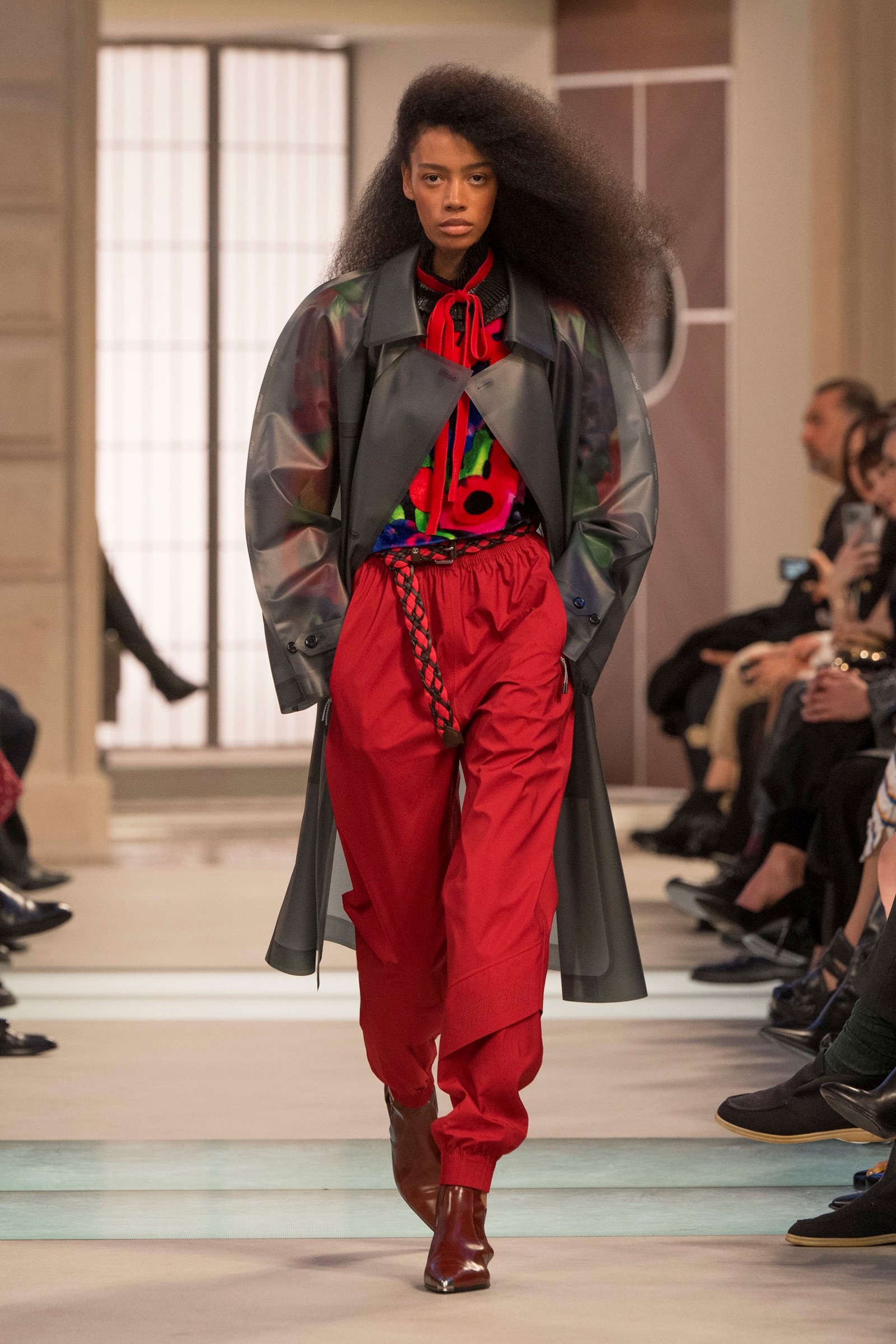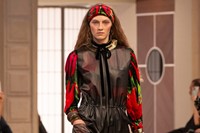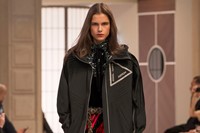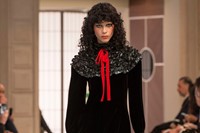Travel is why Louis Vuitton exists – the brand began when its founder was selected to fulfil the today incredibly esoteric-sounding job of trunk-packer to Empress Eugénie during France’s Second Empire, who charged Monsieur Vuitton with “packing the most beautiful clothes in a quite exquisite way”. Almost incidentally, he started making the trunks he packed too, and another French Empire was born. It’s also why a vast Vuitton building on the Champs-Elysées in Paris is wrapped in a gargantuan, ten-story silver Monogrammed trunk, like an AI-generated image made real – and the reason said building, when it opens to the public in 2026, will be a five-star hotel. Many brands could do that, of course, but it makes most sense for Vuitton out of them all.
That is also the reason Nicolas Ghesquière invented a train station as the setting for his Autumn/Winter 2025 Vuitton show, with models passing through esplanades in intersecting paths as if striding towards different platforms. It wasn’t an actual train station, granted – but it was erected right by the Gare du Nord, within echo distance of the chugging train noises of that international port of call. The actual show music, however, came courtesy of Kraftwerk – the cover art of the Trans-Europe Express EP was even printed on bags. Its title reflects the theme, but Kraftwerk’s music was also keyed to the mood of the collection, strongly 1980s influenced, our train trip not only through space, but time as well.
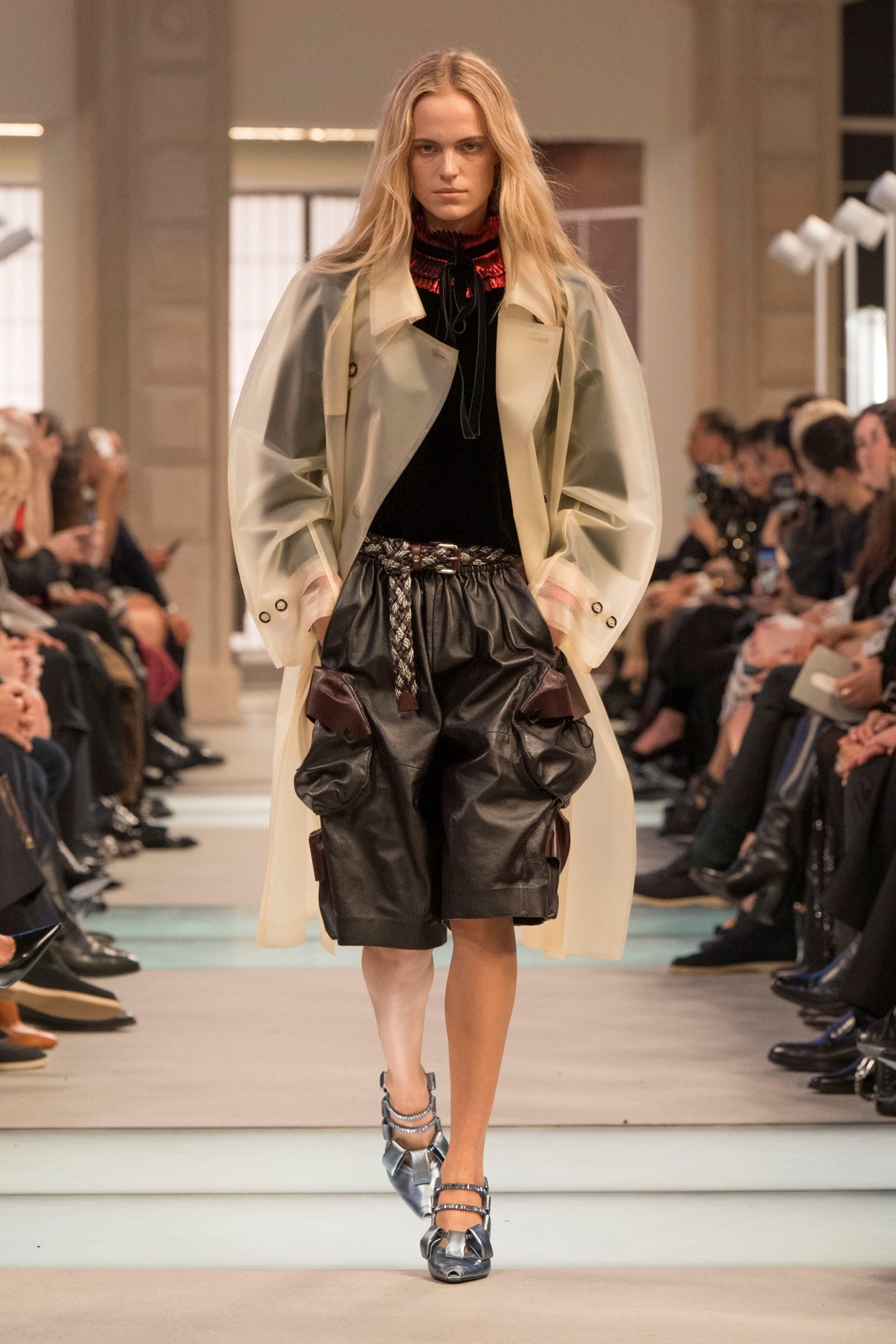
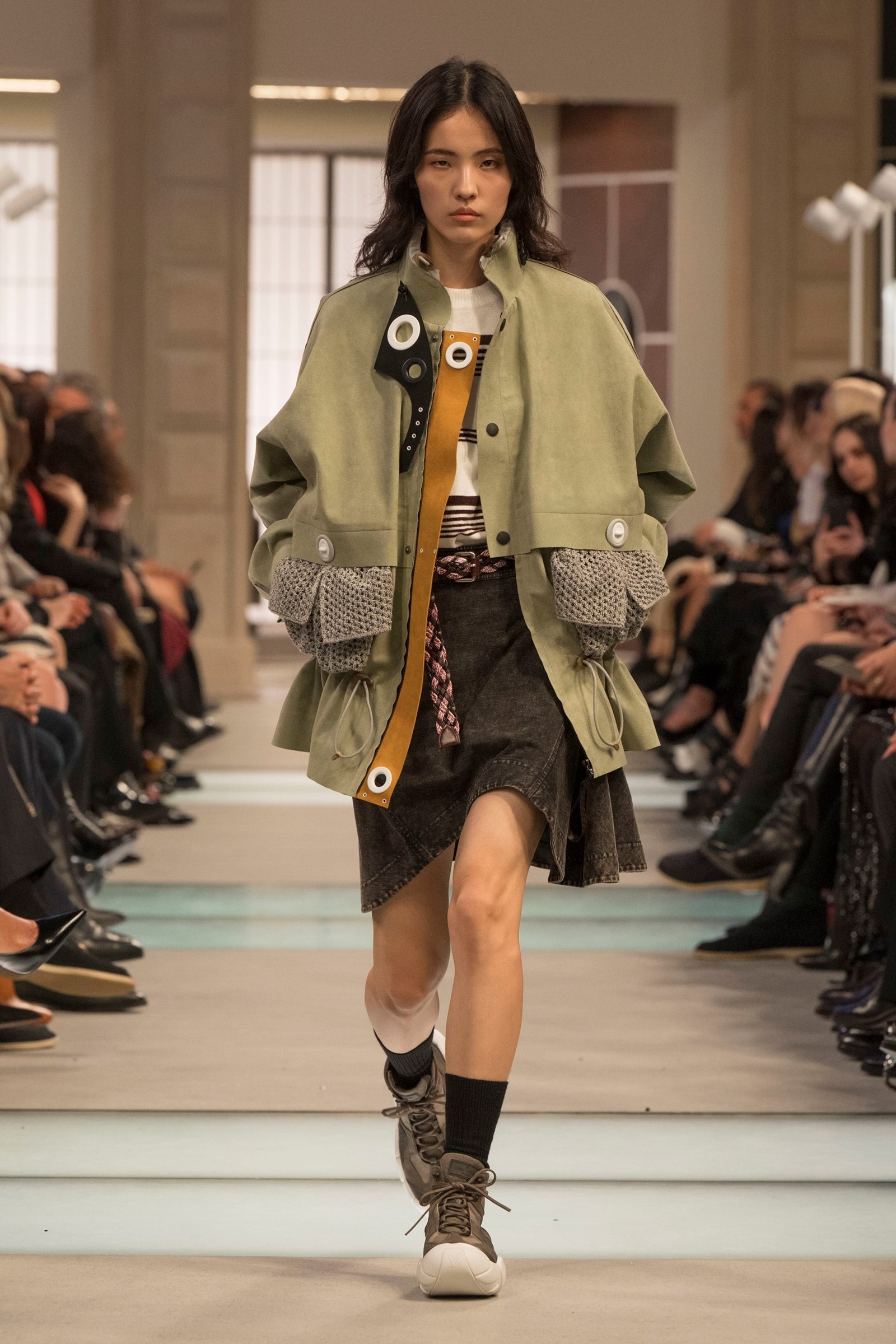
Invention, reinvention. The train station where this was staged was imaginary, but was based on an original – L’Étoile du Nord, a throwback to the 19th century, when Vuitton was founded, but recently dormant. It’s set to become a corporate headquarters, but Vuitton commandeered the space for this show. And it’s a fitting metaphor for a house reinvented, formed by its past but not restrained.
There was a similar sense of freedom in these clothes. For Ghesquière, a train station is a place of intersecting lives and celebrated differences, so no two outfits seemed the same. Granted, these were the most fabulous train travellers you’ve seen since Eugénie’s days. The riff was 1980s rather than 1850s, but the clothes switched between corporate working girl suiting – broad shouldered, forceful – and the delicacy of hand-painted devoré dresses, outdoorsy gear, mannish and femme, sleek or sports. The divergence was precisely the point, like crossing paths from different walks of life – strangers on a train. Of course, their luggage was important; they carried, accordingly, dinky ladylike bags, vast duffles, instrument cases in Damier and Monogram canvasses, wrapped-up camping blankets, and a glowing Victorian lantern. Because, why not? And then, of course, the collection itself became about travel too, between those different walks of life, between other identities.
That’s something that has always fascinated Ghesquière at Vuitton – from his very first collection, there’s always been a root in reality. Here, it was multiple realities, different lives, a whole spectrum of people criss-crossing in their own journeys, their own worlds. But they did all look like they’d be staying in the Vuitton hotel if their trains got delayed.
